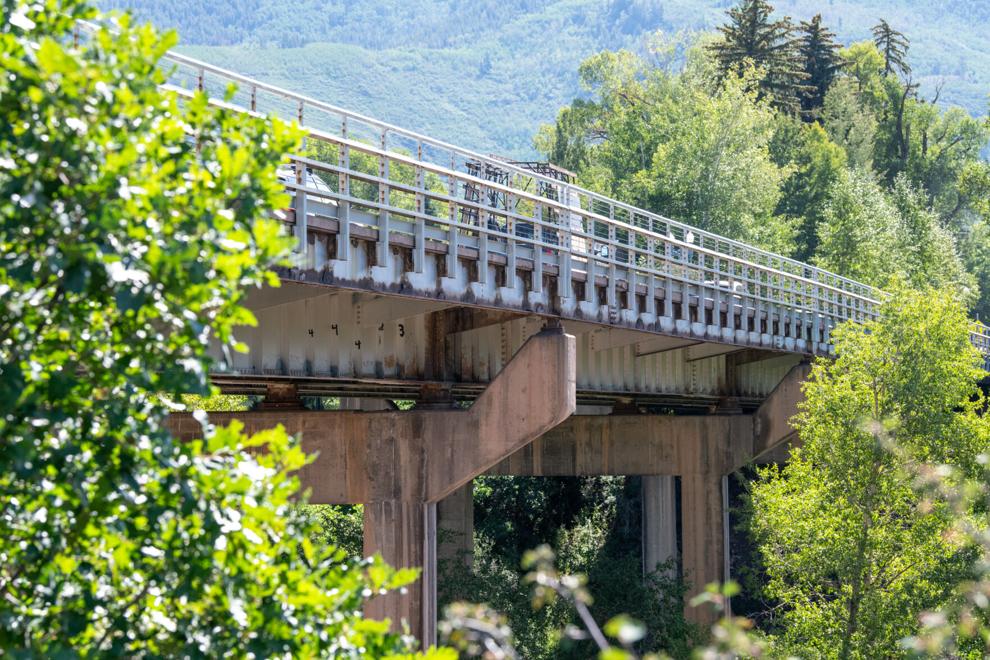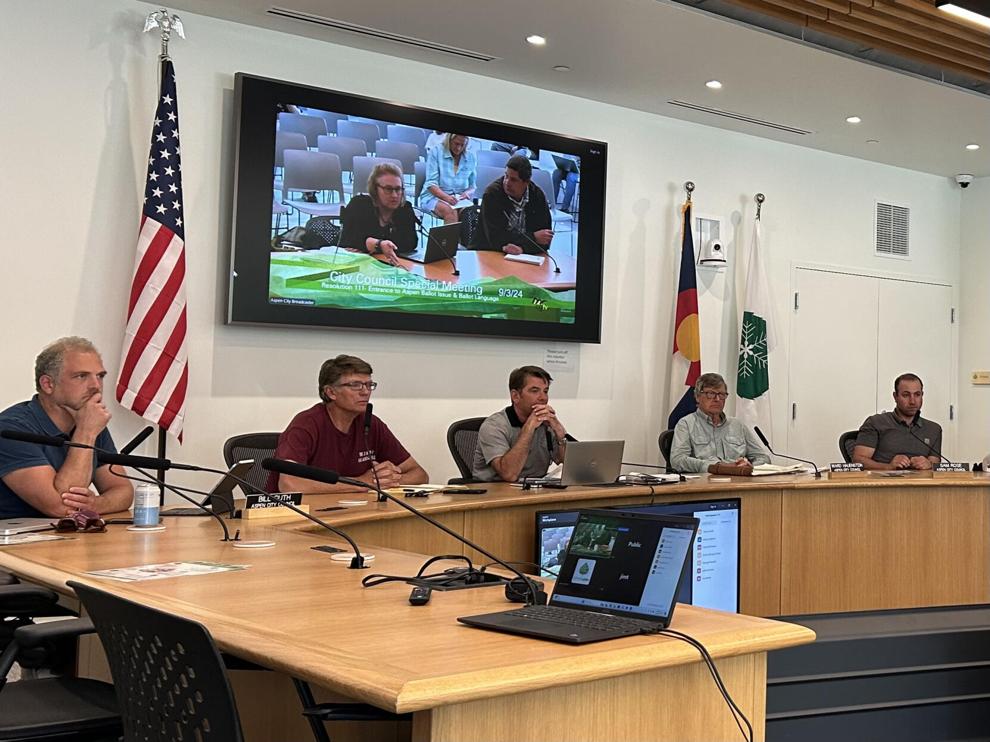

In a special meeting originally scheduled to set ballot language for a question this November, Aspen City Council once again changed course and instead decided against taking the issues to voters this fall.
The council previously voted 3-2 during an Aug. 27 meeting to ask voters to approve or reject allowing a two-lane parkway with two designated bus lanes across the Marolt Open Space. It was a reversal from an Aug. 19 decision when the council voted against an entrance to Aspen ballot question, also in a 3-2 vote. Councilman John Doyle flipped his initial position and supported a ballot question during the Aug. 27 meeting, but flipped his decision back on Tuesday to oppose a question on the November ballot.
Councilman Sam Rose, who has supported a ballot question on the entrance since the Aug. 19 meeting, also reversed his stance Tuesday, wanting instead to create a “concrete plan of action” to gauge community sentiment on the entrance instead of rushing a question on the ballot three days before language is due.
All five council members seemed in favor of pursuing a ballot question about the entrance during an upcoming March municipal election, giving the council more time to inform the public about the alternatives and determine what needs are most important to address for the aging Castle Creek Bridge.
“There’s a lot to understand about this plan, about what it is and what it isn’t, and what it will do and what it won’t do, and what it might do, what it could do,” Councilman Bill Guth said. “And expecting the electorate of Aspen to understand that nuance is unreasonable, particularly with questions like those that were presented to us as potential ballot questions.
“I think it would be irresponsible of us to ask a question like those presented to us that doesn’t present significantly more information than what’s outlined today.”

City staff presented two potential ballot questions Tuesday. One option would ask voters to allow the Colorado Department of Transportation to pursue the 1998 “preferred alternative” for the entrance to Aspen, allowing the construction of bus lanes through the Marolt Open Space. The other option would ask voters to approve bus lanes across the open space, but would keep the option open for entrance alternatives — like the “split shot” — to be considered in the future without the need for another community vote.
The “preferred alternative” would reroute Highway 82 across the open space to connect directly with West Main Street using a new bridge over Castle Creek, bypassing the S-curves. Original designs included two traffic lanes and a corridor for light rail across the open space, but voters have rejected efforts to secure funding for light rail.
A split shot would route inbound traffic over the existing highway alignment and the S-curves, while outbound traffic would flow over a new bridge and cross through the open space.
A ballot question would be necessary to implement the “preferred alternative” because it would involve changing the use of city open space under the city charter. But council members agreed a November ballot question would be rushed and pushing the question to March would give them more time to understand all of the alternatives for the Castle Creek Bridge.
“The authorization for usage of transit across the Marolt, that authorization through a November ballot is not necessary at this time,” said Mayor Torre. “We have a lot of work to do before we’re going to need that kind of voter approval.”
Most council members also agreed adding a question to an already stacked November ballot might bury the issue. Pitkin County voters will be asked to vote on imposing a county-wide property tax to fund affordable housing initiatives and two competing questions about the Aspen-Pitkin County Airport, in addition to the presidential election and other national and statewide races.
All ballot language is due to the Pitkin County Clerk and Recorder’s office by Friday, Sept. 6.
Ward Hauenstein was the only council member still in favor of putting the question on the November ballot. He cited historically higher voter turnout in presidential elections and said a vote would get the entrance decision “going in the right direction.”
Instead, council members asked city staff to pursue several directives that would provide more information about entrance alternatives and what the community sentiment is on each option.
The council asked staff to evaluate the possibility of a supplemental Environmental Impact Statement, engage in a search for a National Environmental Policy Act attorney to determine what a new NEPA approval process would look like, draft language for a March ballot question, move forward with community polling about the entrance, and determine the budget for the NEPA process.
The Castle Creek Bridge is more than 10 years past its 50-year design life. The “preferred alternative” is the only plan for the entrance to Aspen currently approved under the conditions of NEPA. CDOT has said the city would need to pay for a new NEPA approval process if it wants to replace the “preferred alternative” with another plan.
A 2023 CDOT inspection of the Castle Creek Bridge rated its condition poor, scoring 5 out of 9 in its superstructure condition code. Another evaluation of the bridge will take place in October, said Pete Rice, director of parking and transportation for the city, the results of which will be available in early December.
CDOT has said it will construct the “preferred alternative” when the existing bridge requires replacement.